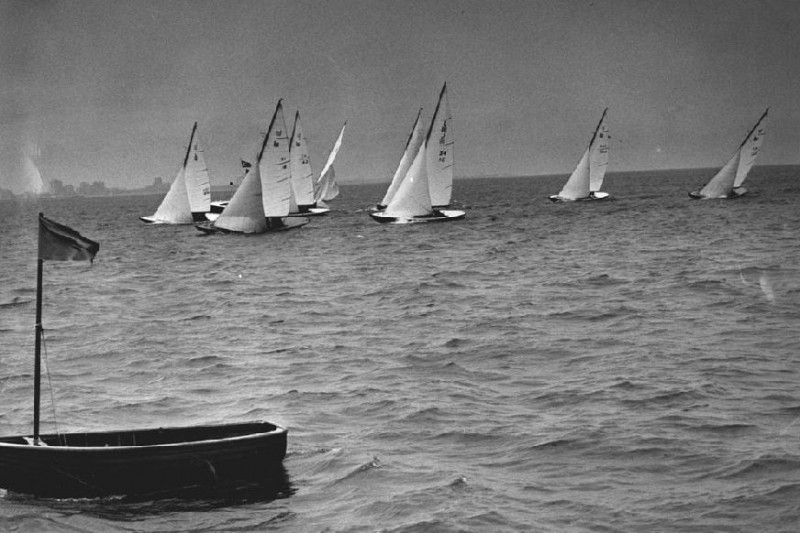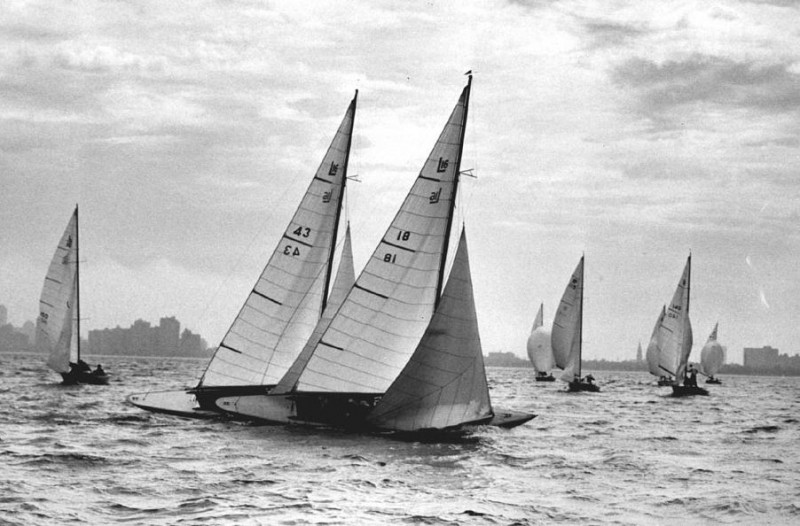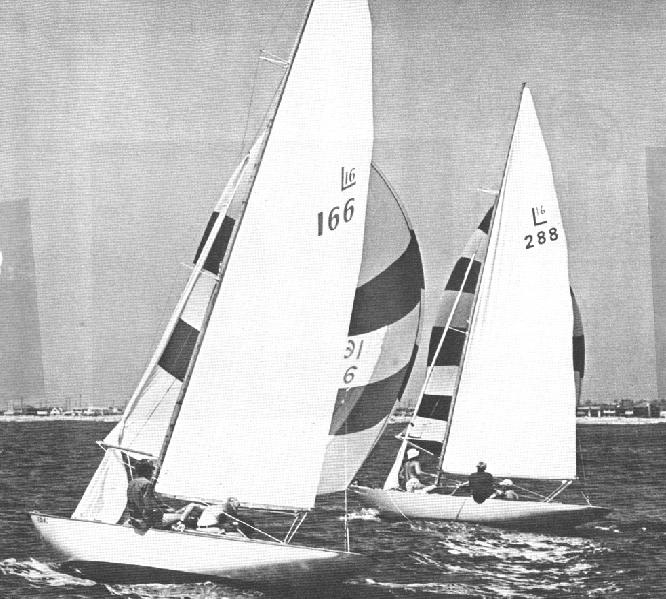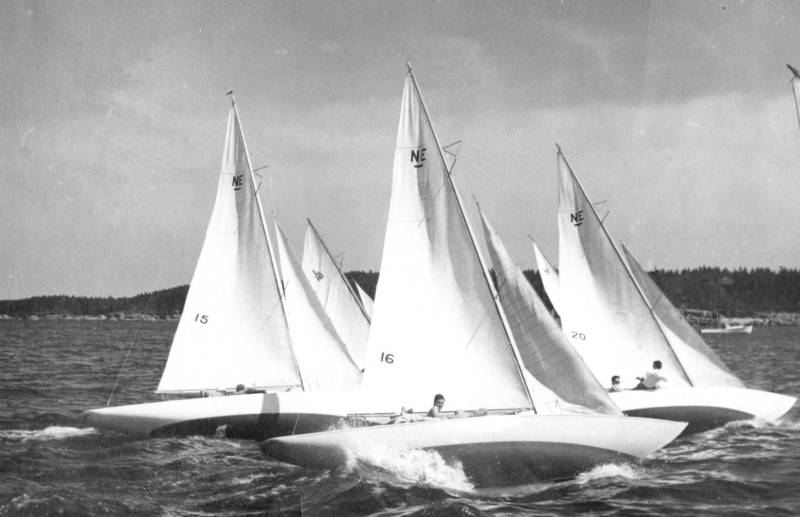




In the early nineteen thirties, the Fishers Island Yacht Club was casting about for a class to use for the junior sailors. A. E. Luders, Sr. and Jr. were chosen to design and build this new one-design class. The “Luders Gang” was well known as active racers and innovative designers of racing boats (they even went on to design several America’s Cup contenders). The Luders decided that rather than produce a “chunky little boat” similar to many others used by juniors, they would design a miniature version of the then modern International Rule Sloop (such as the Six Meter). About fifteen L16s were built in 1934, and they were raced at Fishers Island until a hurricane decimated the fleet later in the decade. The surviving boats scattered, but interest in the class grew as more and more people saw the sleek little boats.
During World War II, Luders Marine Construction Company began building “molded plywood” life rafts to be dropped from airplanes to downed pilots in the water. This was a new technology using wood veneers and large autoclaves to cure the glue, producing a “monocoque” hull identical in construction to some aircraft such as the famous “Spruce Goose”. In 1944, as the war was winding down, Luders began looking for post-war uses for these autoclaves and decided to adapt the L16 design to this new high-tech building process. Thus, the new “hot-molded” L16 Class was born! The L16s were built with five 1/8″ thick mahogany veneers. The boats are 26’4″ long, 16’4″ at the waterline, they have a 5’9″ beam, a 4′ draft, displace 3,200 lb, and utilize a two-thirds fractional rig with main, 180% genoa, and a spinnaker.
Clare Udell, of Chicago, was an early promoter for the class and encouraged six others to join him in ordering the first seven boats in early 1945. Priced at $1950 the boats were marketed as hot racers for the common man (but the Shrivers and Rockefellers fell in love with them too!). The first race was in May and the class was a success. The Chicago fleet grew rapidly and was soon joined by other fleets in Connecticut, New York, Maine, Louisiana, California and Bermuda.
In 1946, the Ocean-Great Lakes Challenge Cup was reactivated and the Chicago L16s brought the trophy home in 1948. The Gehrmann Trophy competition was transferred from the Tumlarens to the L16s in 1947. In 1947, Sam Clark won the first L16 International competition. The fleet also did well in open regattas under the International Rule, often beating large fleets of S-boats, R’s and Q’s! Both the Adams and Mallory Cups have been held using the L16s.
The L16 continued to be a popular racing boat in the fifties and sixties, with twenty-boat regattas a common occurrence. In the mid-1960s, the boats began to be built out of fiberglass, but careful attention to construction specifications kept the one-design status of the class secure.
During the seventies and eighties, the class began to decline as fleets lost skippers to the more modern classes and the old boats began to fall into disrepair. However, the beauty of the L16s and the relative ease of maintenance has kept the class alive and inspired a new generation of Luders devotees. Although the days of twenty boats on the starting line may be gone, the current L16 racing is very competitive and keenly enjoyed by sailors that appreciate boat aesthetics as well as performance.
Information courtesy of the l16.0rg website.








